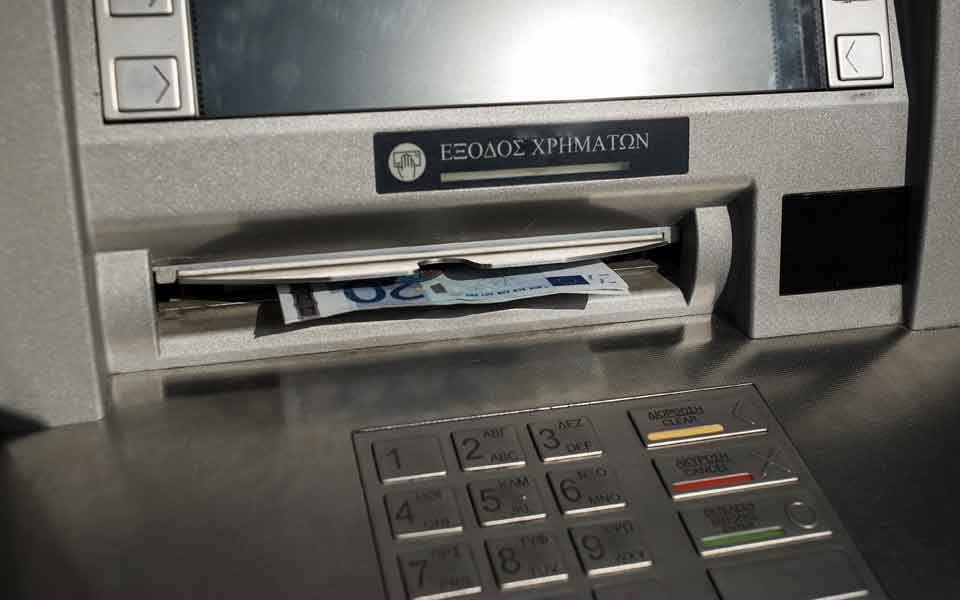Greek banks look to deal for a restart

Many people will be relieved if or when the protracted review of Greece’s program is completed. Among those who will be heading the queue formed by the thankful will be the country’s bank executives. Of course, anywhere you go in the world it is unlikely that bankers will attract much sympathy from the rest of the public. However, in this case, many will be able to share in the relief felt by those making the decisions at the Greek lenders.
The last few months have left the local banking system hamstrung. Greek banks have been through the mill during the crisis, requiring three rounds of recapitalization, and were hoping to dust themselves off in 2016 and return to action. This after having to suffer the injury of shutting down for almost a month in the summer of 2015 and enforcing restrictions on the amount of money their customers could withdraw or transfer.
For much of last year, it looked like the lenders were finding their feet again and the formation of ambitious plans to reduce nonperforming loans (NPLs) in the coming years gave hope that Greece would in due course have a fully functioning banking system again. This is the key to the story regarding Greek banks – restoring them to health is not about saving the banks themselves, or the careers of those who run them, but about them performing the role they are supposed to in an economy that works properly, which is to provide liquidity to local businesses and retail customers and act as a facilitator of growth and job creation.
Greek banks have not performed this role for several years and hopes that this might soon change have taken something of a battering over the last few months. Local lenders have been hit by a double whammy: Depositors have been taking out some of the money they had been putting back into the financial system since last summer and an increasing number of customers have stopped paying their loans, including some of those that had already been restructured.
This behavior has been driven by the uncertainty caused by the failure to wrap up the review and by the lengthy period it has taken to draft legislation creating an out-of-court workout process so that banks and customers can settle their debt disputes.
Kathimerini has reported that there has been an increase of around 2 billion euros in the stockpile of NPLs during the first quarter of this year. This is a significant setback for the banks, not only in terms of them achieving the goals set for reducing the level of bad loans but also because it halted the momentum that was being built last year.
A Bank of Greece report published last week showed that local lenders had reduced their nonperforming exposures (NPEs) to 104.8 billion euros in the final quarter of 2016, which was a billion short of the target, while the NPL pile was down to 75.9 billion euros, which was 400 million better than the target.
The central bank said the reduction in the bad loans was due to the implementation of more effective workout solutions, also leading to higher cure rates, coupled with write-offs.
When broken down by lending segment, the data show that the Greek banks met their reduction targets in all but that of residential NPEs, where the 1-billion-euro miss was recorded. Otherwise, for both NPEs and NPLs, the goals were reached in the residential, consumer and business segments.
Nevertheless, the NPE ratio in comparison to total loans remained high, underlining the huge task that the domestic banks face.
According to the Bank of Greece, 54 percent of consumer loans, 44.6 percent of corporate loans and 41.5 percent of mortgages are nonperforming.
If one delves in a little deeper into the loans issued to businesses, the numbers are truly eye-watering. Just over 68 percent of loans to small businesses and professionals are in the NPE category, followed by 58.9 percent for small and medium-sized enterprises (SMEs).
The plan submitted by the Greek lenders to the European Central Bank’s Single Supervisory Mechanism (SSM) last September foresaw NPEs being slashed by 37.7 percent (40.2 billion euros) between the second quarter of 2016 and the end of 2019. According to the scheme, NPLs would be reduced by 48.7 percent (38.1 billion euros) during the same period.
Greek banks released their fourth-quarter results for 2016 over the last few days. In doing so, they noted that the NPE and NPL reduction targets were met at the end of last year, but added that this momentum has not carried on into 2017. They told investors that customers appear reluctant to enter into workout solutions. Some analysts believe this is because the debtors are hoping the would-be legislation on the out-of-court settlement process will be more favorable so they are holding off for the time being. The banks also noted that there has been a rise in the number of customers redefaulting.
Another area where the decisions taken by customers are worrying bank executives is the level of deposits. Although they increased by more than 7 billion euros in 2016, with the lenders’ reliance on Eurosystem funding falling to 66.6 billion euros at the end of December, the start of 2017 has seen a totally different story unfold.
According to the Bank of Greece, there were deposit outflows of 2.3 billion euros in the first two months of the year. This trend is expected to have continued in March, when depositor sentiment continued to be affected by the uncertainty surrounding Greece’s negotiations with its creditors over the second program review.
Because of this trend reversal in the first quarter of the year, there was an increase of 330 million euros in the Emergency Liquidity Assistance (ELA) drawn by Greek banks. This was the first rise in ELA funding since April 2016 and came after a reduction of 3.9 billion euros over the course of last year.
All this means that if there are positive developments on the review front in the coming days, the relief felt by Greece’s bankers will be followed quickly by two clear tasks. The first will be to ensure that depositor confidence returns and money flows back into the Greek banking system, as it started to do last year. The second, which is also predicated in the draft legislation relating to the out-of-court workout becoming law, is to step up the effort to reduce lenders’ exposure to NPLs and ensure that the new settlements reached with customers are seen through.





